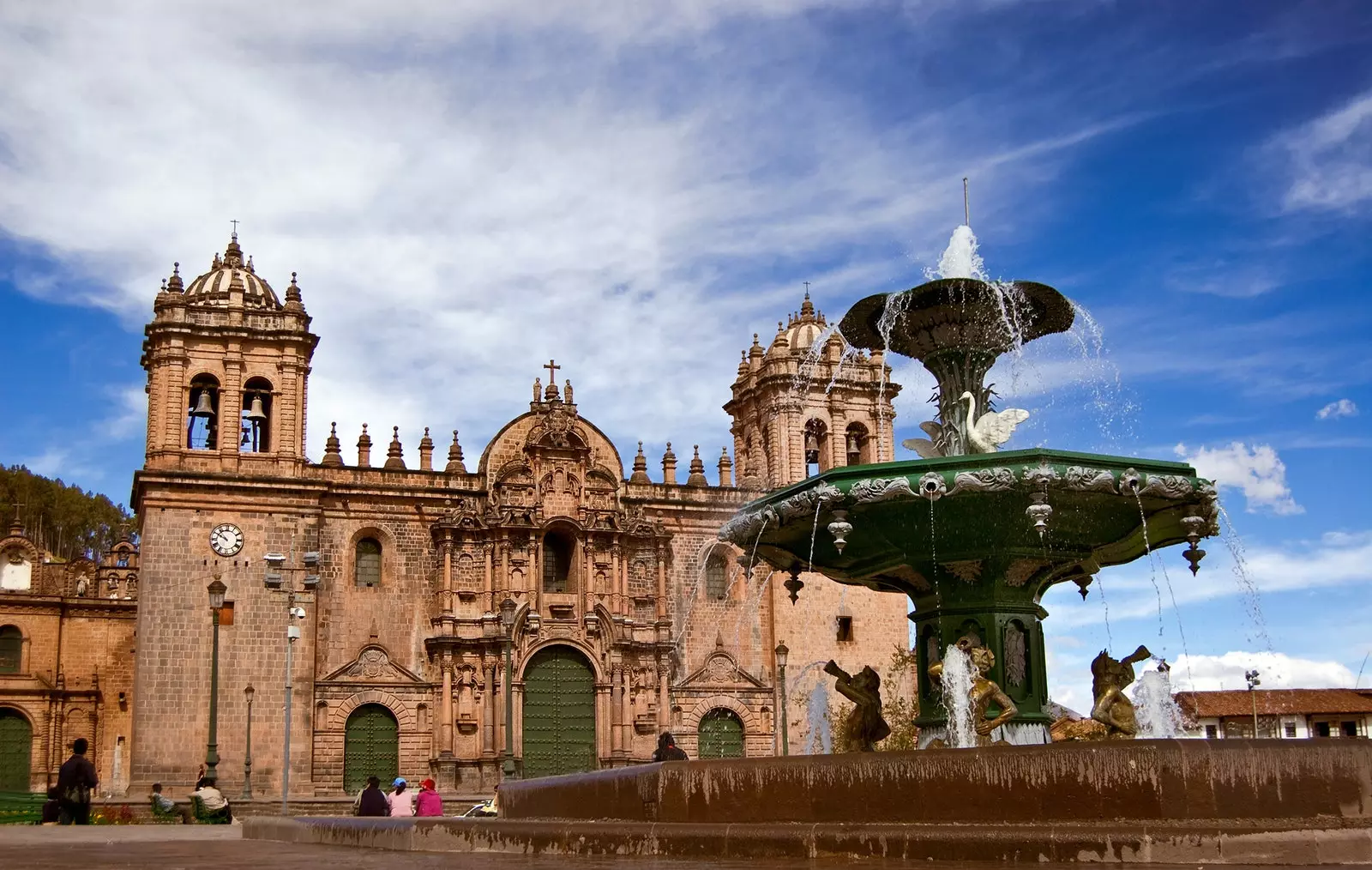
Two days in the navel of the world
You are finally going to fulfill one of your dreams: you are about to land in **Cuzco, the capital of the ancient Inca Empire,** and you are dying to eat the city.
However, your planning only allows you to enjoy its cobbled streets, its women in multicolored regional costumes, its rich heritage value and its street stalls for a few hours: 48, to be exact.
You take a look at the map, your guide, your notebook full of notes on what to see and where to go in this mythical city of Peru, but the overdose of information paralyzes you.
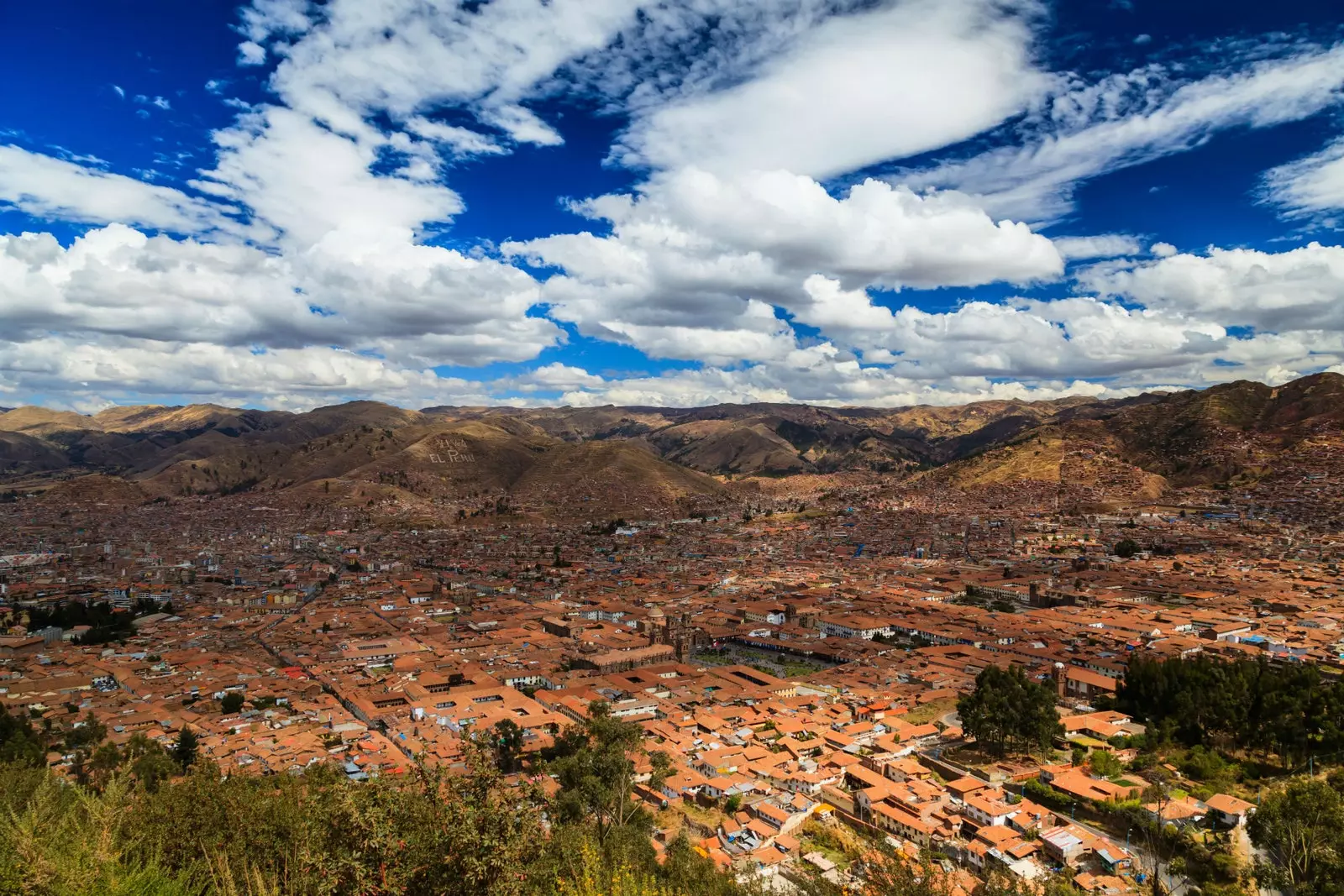
Views of Cuzco from the Sacsayhuaman temple.
Where to start? What not to miss? How to take advantage and squeeze every minute you spend in this exciting little corner of the world? Do not panic. Above all because If Cuzco has something, it is that it deserves that you enter it with patience and calm.
Therefore, take note: we start a trip, slowly but surely, through the navel of the world.
DAY ONE
8:30 a.m. We get up in our charming hotel in the center of Cuzco, at the foot of the modest neighborhood of San Blas and we rush breakfast based on toast, various juices and eggs in all their shapes and textures.
The chosen place has been ** La casa de Mayte **, an old colonial building colored in whites and blues where you begin to feel the Cuzco soul.
After making sure we have the necessary reserves to endure what we have left, we hit the streets. The sun hits hard, although the cold is noticeable. In the end, we are at 3,400 meters high.
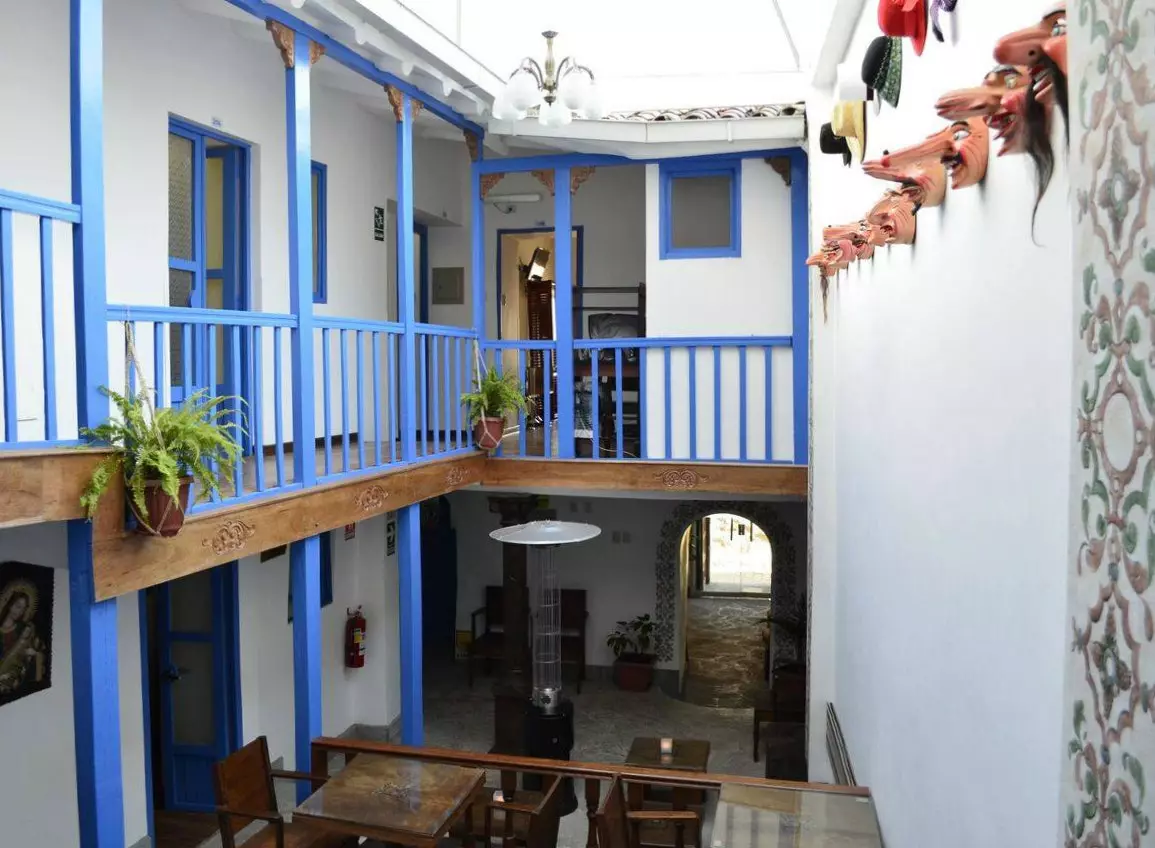
Inner courtyard of La Casa de Mayte, a hotel overlooking the rooftops of Cuzco.
9:30 a.m. We headed down the road towards Cuzco's Plaza de Armas, which at this hour is already beginning to bustle with activity. Tourists walk around with their cameras around their necks. The locals chat lively leaning on the benches next to the mythical Fuente del Inca that majestically decorates the center of the city.
Let's stop for a second! It is worth taking a good look at where we are: possibly it is the most amazing public space in all of South America. On one of the sides, the Cuzco Cathedral, one of the most important examples of colonial architecture in the city.
To complete our visit, we get an audio guide that tells us, among many other curiosities, that the cathedral took almost a century to build and that it contains in its interior a fairly exemplary sample of Cuzco art, famous for merging the most religious European pictorial style with the colors and iconography of indigenous artists.
The clearest example? We find him in front of one of his most famous paintings, The Last Supper, by the Quechua artist Marcos Zapata. Of course, in the center of the table, as the main course of the banquet, a roast guinea pig. What other delicacy could it be if not?
After visiting each of its galleries and before continuing with the route, we pay our respects to the Inca Garcilaso de la Vega in the church of Triunfo –communicated with the cathedral inside, just like the church of Jesús María–. His remains rest here since King Emeritus Juan Carlos I decided to return them to the city where he was born in 1978.
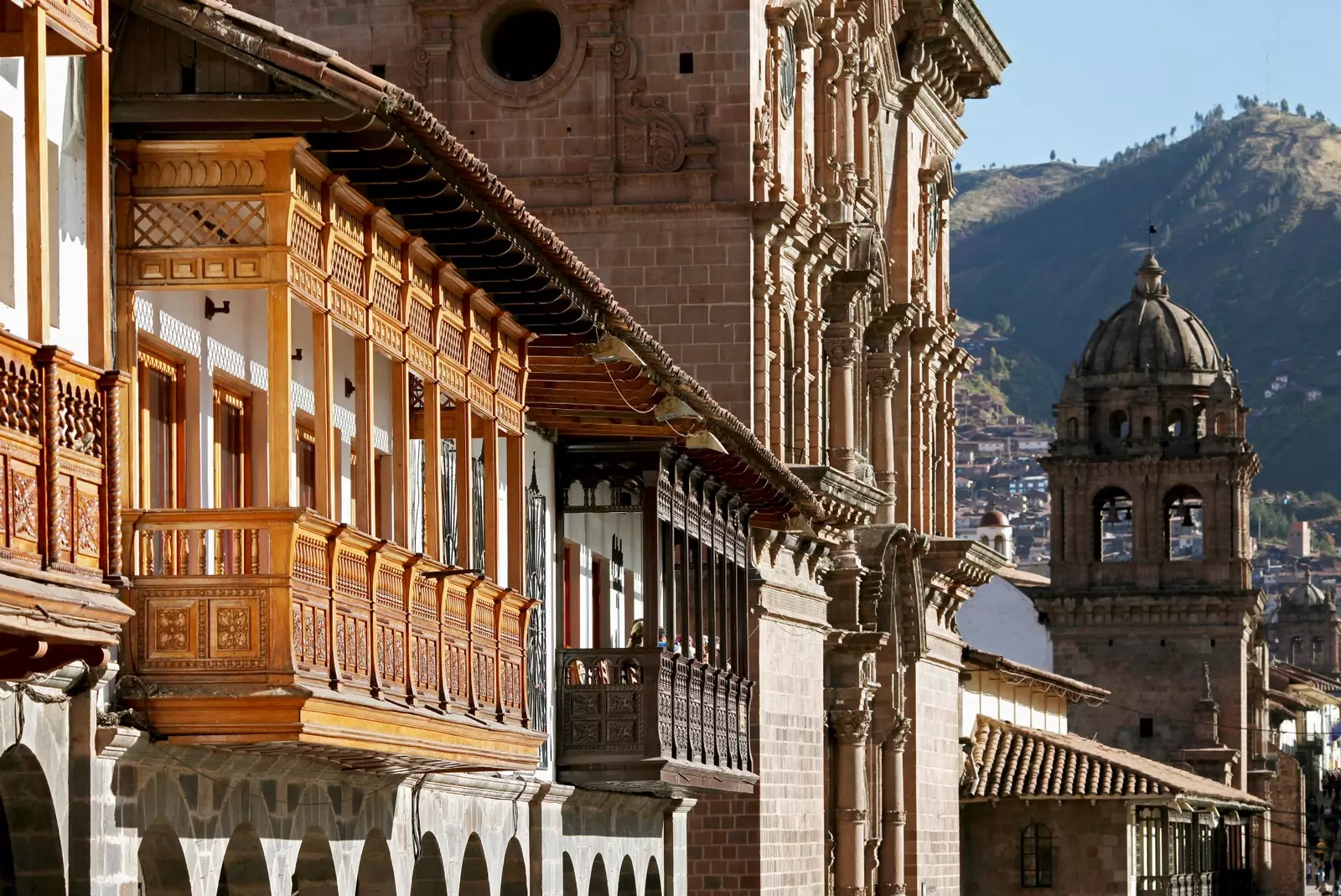
The portals of the Plaza de Armas recall the colonial past of some buildings that preserve Inca walls in their foundations.
11:30 a.m. Between one thing and another, it's noon. And boy, are we hungry! We stopped for a drink at one of the cutest cafes in the area. We climb the stairs to La Calle del Medio, on the heights of the arcades of colonial origin that overlook the Plaza de Armas.
We look for a little hole in the narrow balconies and refresh ourselves with a lemonade. We are so amazed that we point out the views as a true must.
12:30 p.m. We walk through some of the cobbled streets of the center of Cuzco, letting ourselves be carried away by its charm. The same we ran into indigenous women dressed in clothes of the most vivid colors (with domesticated llamas with which to take a picture for five soles), which with latest generation mountain equipment stores.
It doesn't matter: everything is part of the city Cuzco has become today. A mix of the more traditional and business culture of 21st century products.
The time has come to continue learning about its history, for we are in the oldest city on the American continent –inhabited without interruption– for a reason.
In Qorikancha we discover the Inca ruins of what was the richest temple in the entire empire, built around 1,200 after Christ. Almost nothing. As they say, the temple walls were once covered by 700 sheets of solid gold weighing two kilos each. All the valuable material that existed inside was looted with the arrival of the colonizers. Over time his remains became part of the foundations of the church and the convent of Santo Domingo.
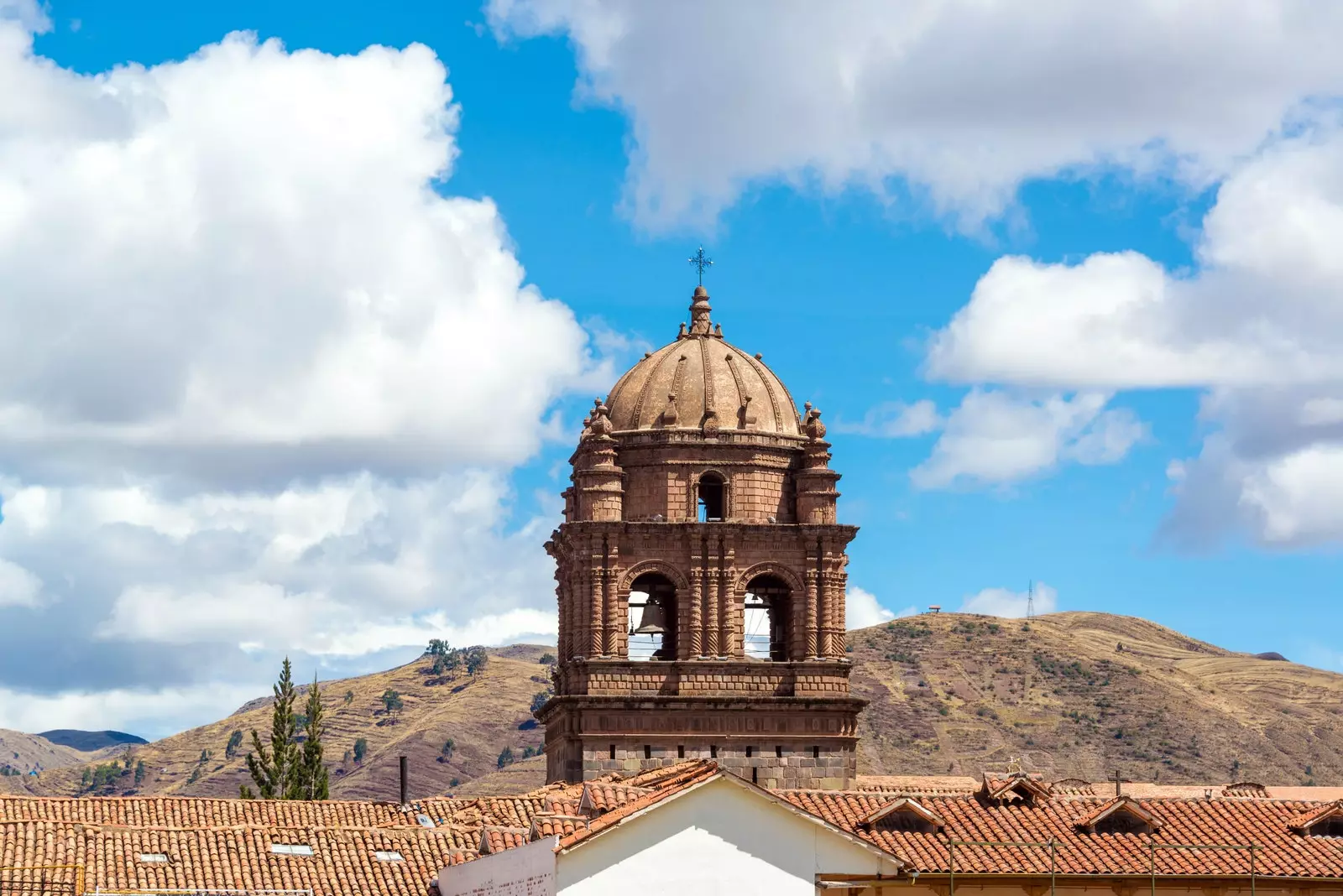
View of the tower of the church of Santo Domingo, in Cuzco.
3:00 p.m. And now, yes, it is time to delve into the authentic Peruvian gastronomy, that full of names and flavors that we have not heard in our lives, but that make our palate experience infinite happiness.
For this we go to a modest place at 248 Arequipa Street. In the Egos Restaurant we have to share a table and there is no option to ask for a menu: the menu (normally made up of a soup, a main course, a drink and a dessert) is what it is and there is nothing else. The dishes are so abundant that they could satisfy us enough to endure a week if necessary... or well, at least until night.
5:00 p.m. We retrace our steps and return to Plaza del Regocijo, next door to Plaza de Armas.
There they pick us up to take us in a minibus to the outskirts of Cuzco. The reason? Let's touch the stars with our fingers. Well, maybe this is a bit of an exaggeration, but yes: we headed to Planetarium Cusco to live an authentic cosmic experience.
Years ago, a family initiative led to the creation of this small project to share the passion of its founders for astronomy with travelers from all over the world. Based on the beliefs of their Inca ancestors, for two hours it is time to learn about the constellations in this hemisphere of the planet (remember we are in the south!), about incredible legends and stories.
But the best part is yet to come. To finish we went out to the garden, where in total darkness, and thanks to professional equipment and telescopes, we contemplate the stars and planets as never before.
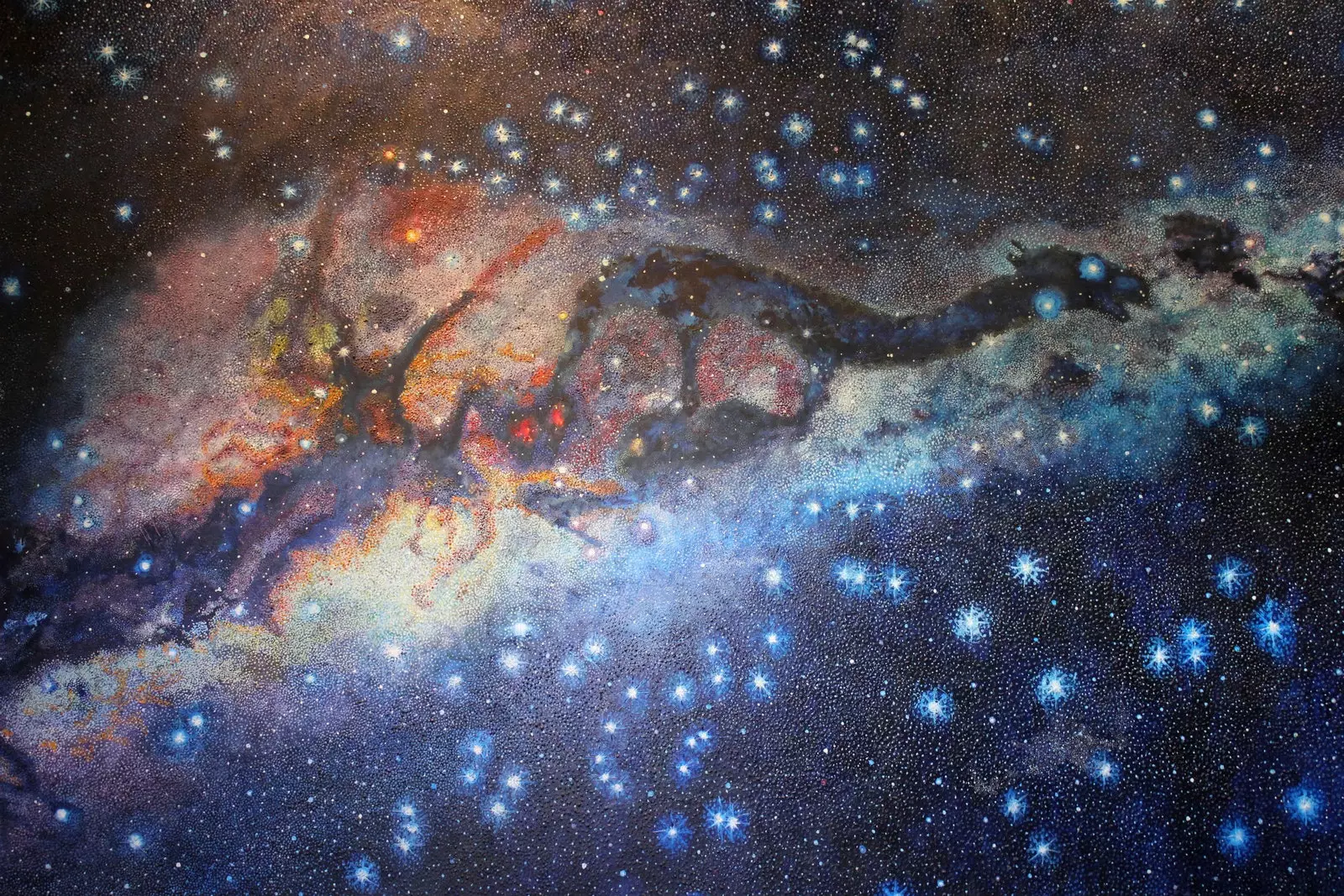
At Qorikancha, a painting by Cusco artist Miguel Araoz Cartagena shows the Milky Way over Cusco.
8:00 p.m. After this interesting excursion, we return to Cuzco. We go through the Plaza de Armas once again to enjoy it, this time, at night. Although it is the same place where we walked in the morning, now, illuminated, it will seem completely different to us.
Despite being tired from the intensity of the day, we make a stop at a classic Cusco. At El Museo del Pisco it's time to savor one of its mythical cocktails to the sound of live music. To accompany, some tapas from his extensive menu (we still have lunch very much in mind).
Between piscos in its very different variants the night goes away. And tomorrow it's time to continue discovering Cuzco!
DAY TWO
9:30 a.m. Still recovering from the nocturnal piscos, we left the hotel without trying breakfast. Today we want to start the day in the Central Market of San Pedro, one of those places where you can contemplate the authentic essence of the city.
We look for the juice stand that most convinces us among the calls for attention from its owners: they all want to make us their customers. We sit on one of their benches and order the weirdest fruit mix we can think of: It's the same, every combination is possible here.
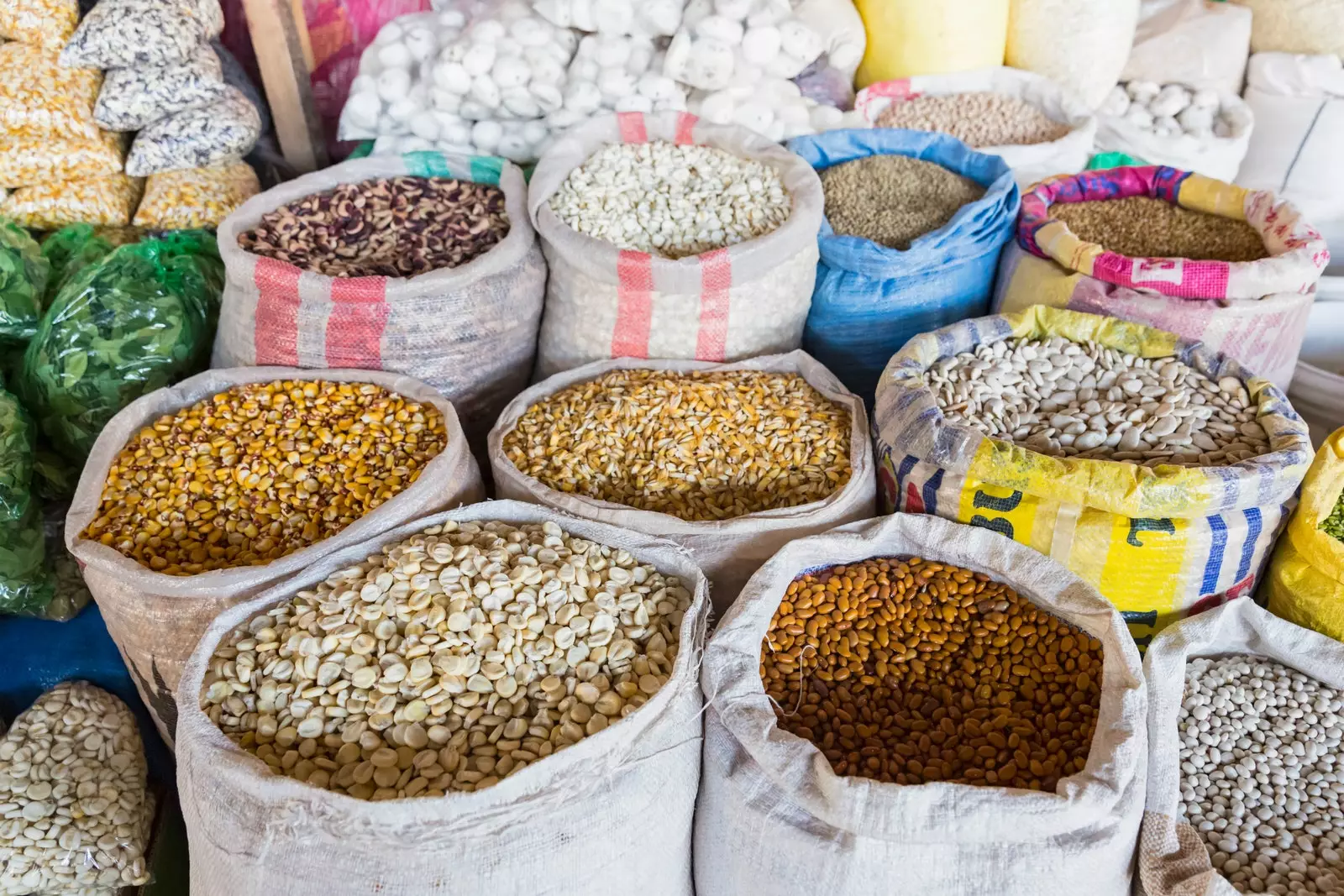
Sacks of corn, cereals and beans in the Central Market of San Pedro.
We walk the aisles between potato stalls **(up to 3,000 different varieties exist in Peru!)**, fish, bowler-shaped bread or ointments against all kinds of ills... The fruits and vegetables smell like nowhere else and their intense colors seem pure fantasy to us.
11:30 a.m. We continue walking through some of the main streets of the center. Businesses displaying stylish – and expensive – alpaca garments in their windows come one after another. Sometimes, they are combined with currency exchange houses or tourism agencies where you can buy packages to explore the Sacred Valley or the very Macchu Picchu.
We pass by the convent of Santa Clara and go through its beautiful arch. On Sundays, the Plaza de San Francisco is usually full of atmosphere. The peasants of the area gather here to chat in Quechua, eat, play and have fun at improvised gastronomy and leisure stalls.
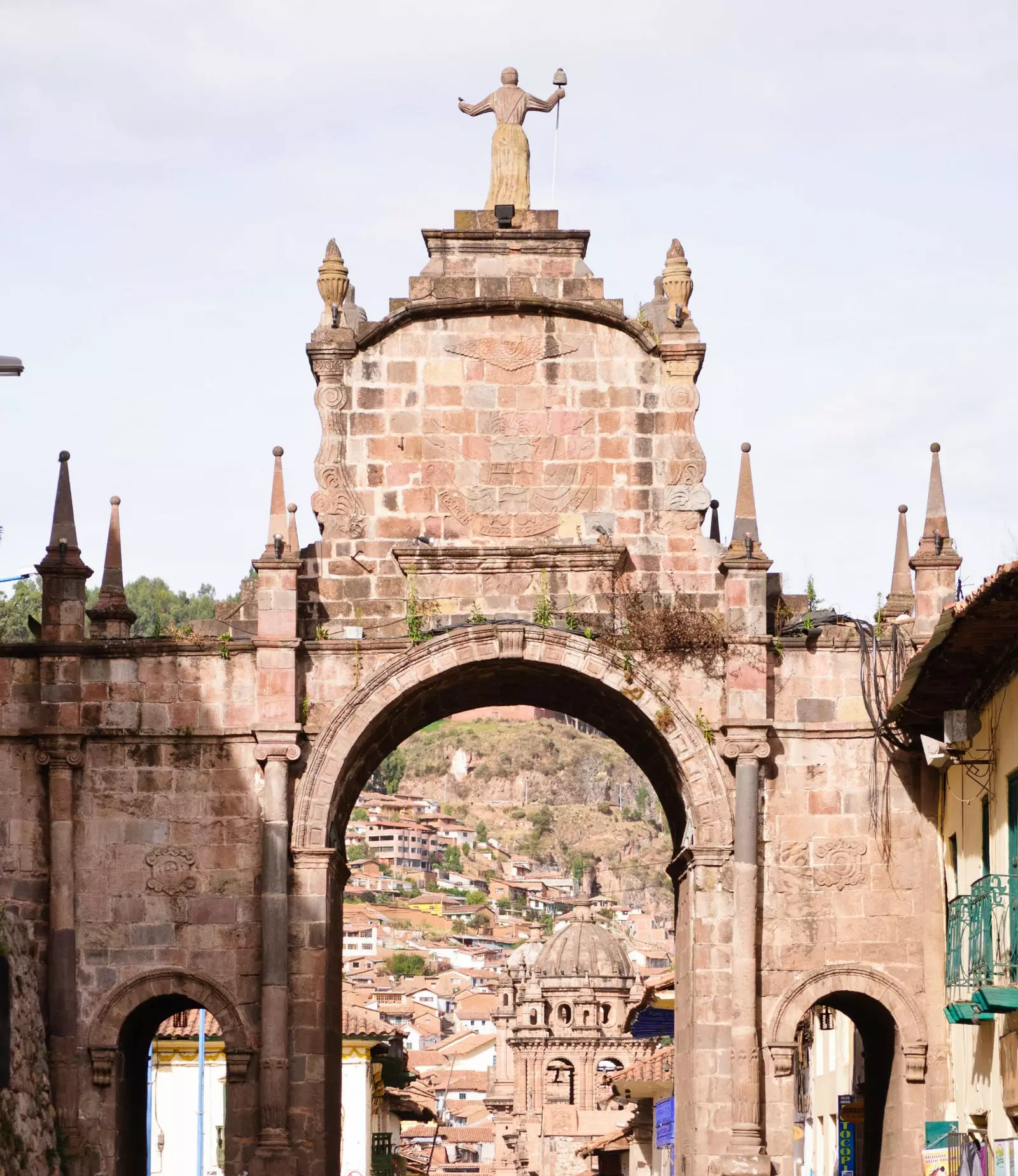
The Arch of Santa Clara, in Cuzco.
We walk down Calle del Triunfo and come across a group of people around a wall. This is the old palace of the Inca Roca, which today houses the Museum of Religious Art, and what causes so much expectation is none other than 'the stone of the 12 angles', considered Cultural Heritage of the Nation of Peru for its uniqueness, great finish and beautiful perfection.
2:00 p.m. The roar of guts warns us that it's time to eat. And we are in luck! We are precisely next to Cicciolina, a neat restaurant on the second floor of an old colonial building where you can have tapas in its bar area or sit in your dining room to enjoy a great meal. The open kitchen allows us to impregnate ourselves with all those smells that are just a preview of what is to come.
5:00 p.m. It's time to enter one of the most picturesque and authentic neighborhoods of Cuzco. Saint Blaise, With its steep slopes, its blue doors and its houses of classic architecture, it welcomes us from the lower part of the hillside.
The quintessential artists' quarter is full of galleries and craft shops where we will surely spend more than we think. The ideal is to get lost in its alleys, up and down stairs (putting our lungs and our adaptation to height to the test, it must be said) and wander aimlessly.
We spent the afternoon reveling in what life is like in this area of the city. With no traffic and no noise beyond the barking of a dog or the conversation between two neighbors, the essence of much of Cuzco is found here.
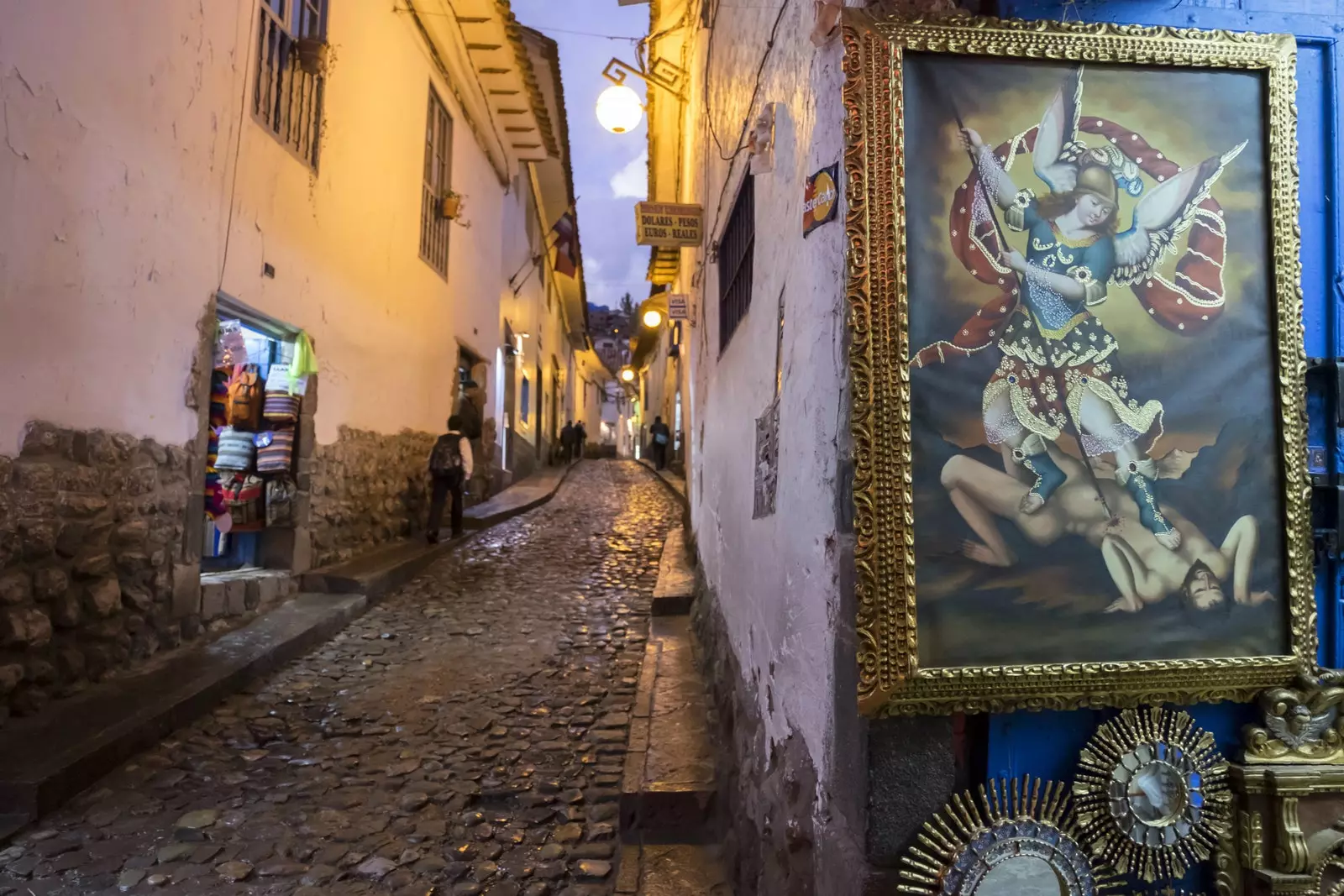
Steep slope in the neighborhood of San Blas, the one of the Cusco handicrafts.
In the Plaza de San Blas we make a stop to visit its church, a simple adobe construction that is a delight. From the San Blas viewpoint, with the entire city spread out at our feet, we enjoy one of the most beautiful sunsets ever seen.
8:30 p.m. We continue in San Blas which, despite being a tiny neighborhood, goes a long way. We entered Km 0, one of the gambling dens that have established themselves as a meeting point for locals and tourists, and we ordered a Cusqueña beer to get down to business. The rest comes by itself. Live music is the perfect companion for snacking and the piscos that come later. Time passes and we are so happy that we forget about the clock.
It's our last night and we don't want it to end. On leaving, and before returning to the hotel, one last treat. We walk through part of the city center quietly, in the solitude of the night, and we record the stamp in our mind. It will be one of the most beautiful memories that we take with us from the beautiful Cuzco.
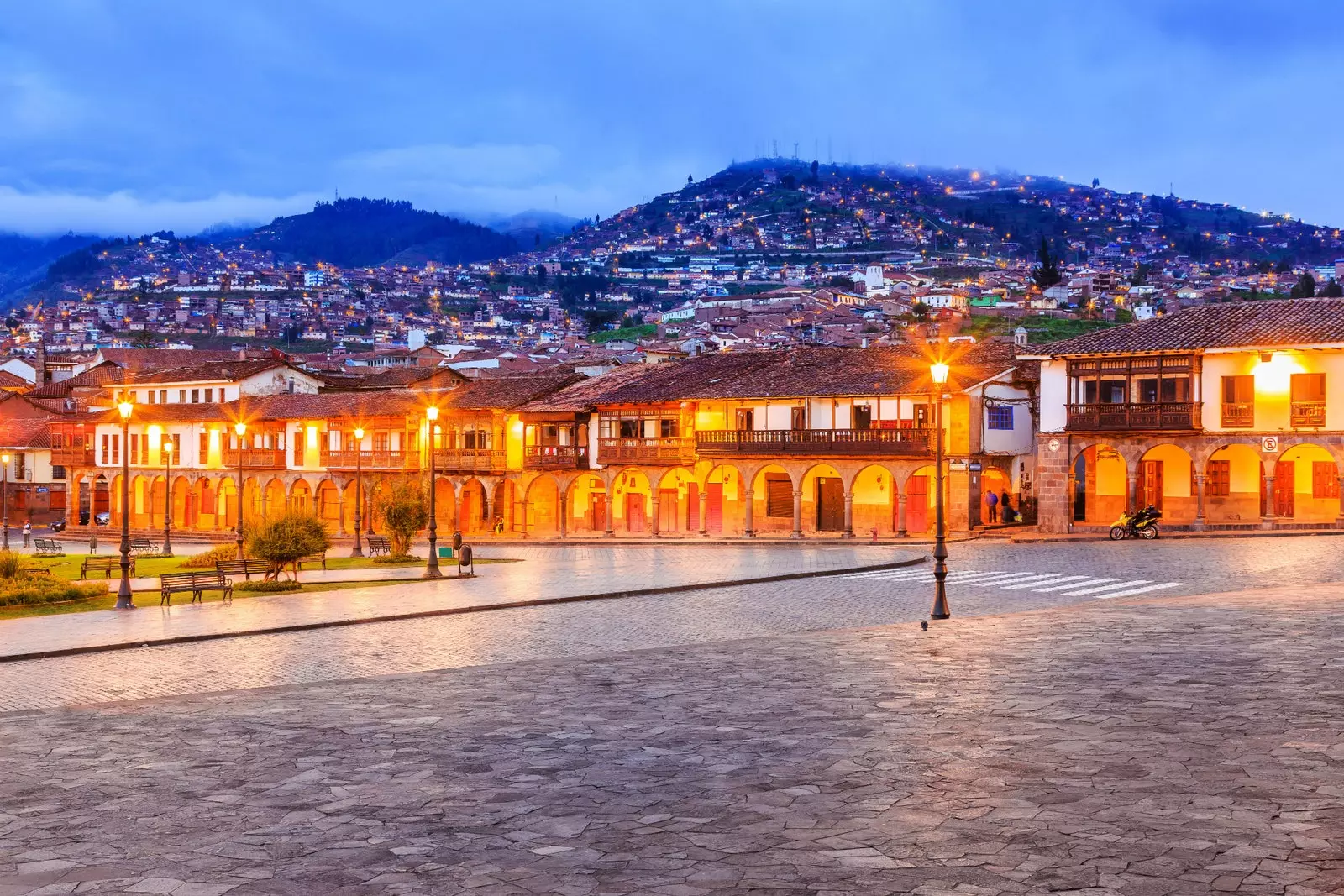
At nightfall the Plaza de Armas is an idyllic place to stroll.
